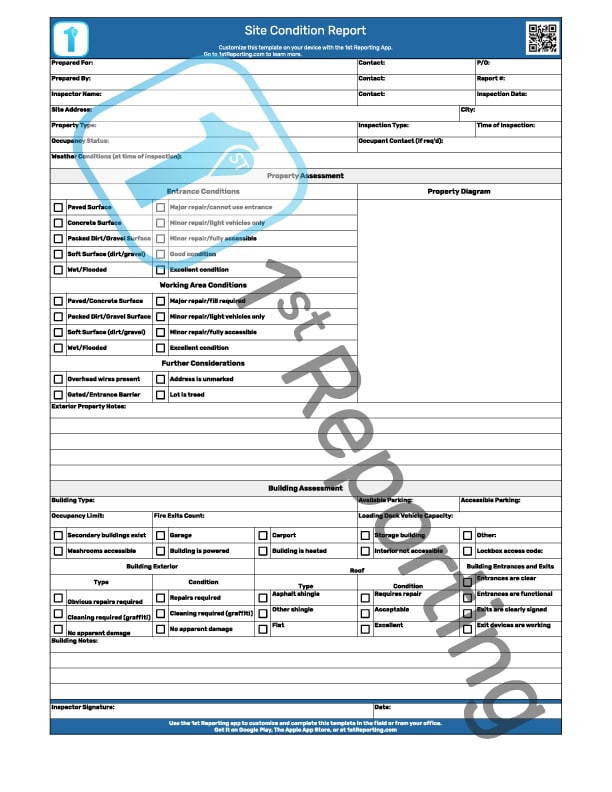As a seasoned service manager with over two decades of experience managing mobile service teams, I’ve witnessed firsthand the critical role that tool inventory management plays in the success of our operations. Effective inventory management is the backbone of a well-functioning service team, whether it’s ensuring that our technicians have the right tools for the job or quickly identifying and replacing missing or damaged equipment.
However, like many managers of mobile teams, I’ve also grappled with the challenges of using paper-based checklists and reports. From misplaced documents and illegible handwriting to the time-consuming process of manually updating records, these traditional methods have often left me feeling like there must be a better way.
I’m excited to share the final paper inventory checklist you’ll ever need—a downloadable mobile crew tool inventory checklist I’ve developed to streamline inventory management.
In this guide, I’ll walk you through how to use this checklist effectively and introduce you to an innovative application called 1st Reporting that’s revolutionizing how we manage our service teams. 1st Reporting is a powerful app that lets you create digital forms, checklists, and reports and disseminate them to your teams for instant access and completion.
The app also features custom notifications that keep you informed in real-time, enabling easier management of your teams. So, without further ado, let’s dive into the world of efficient mobile inventory management and explore how this checklist and the 1st Reporting app can transform how we work.
Included in the Service Vehicle Tool Inventory Checklist
I’ve broken down the mobile crew Tool Inventory Checklist into five essential components. I’ll describe each below, including the intended functionality. I invite you to bookmark this page and use it to help train your team to complete the checklist appropriately.
The Administrative Section
Five pieces of information are essential for a service vehicle tool inventory. These include the following fields:
- Service vehicle identifier
- Date of tool inventory check
- Name of the person performing/responsible for the inventory check
- The role of the person performing the tool inventory check (in case a helper or apprentice completes the assessment)
- The reason for the inventory check. Is it daily? Weekly? Monthly? Due to loss?
These five fields provide a quick overview of the inventory check and a means to file the forms orderly, by vehicle ID, date, or both.
The following three sections complete the vertical column central body of the inventory checklist and are described below.
Tool Information Columns
The initial five columns provide a means of identifying the tools on the service vehicle. There are 27 rows available on a single sheet of paper, so if your crews carry more than this number of tools, you will need multiple sheets. I recommend utilizing categories to organize your tools, such as power and hand tools, to fit your needs. It is how I managed my crew’s inventory checklists easier.
Of course, printing multiple pages per truck is a nuisance, so I have a solution for that too. More on that after. For now, let’s continue with the Tool Information columns.
I’ve provided five columns to summarize the tool information. These include the following column headings:
- Item Number – Helps when completing asset inventory.
- Tool Description – Fairly self-explanatory, a simple description of the tool.
- Tool Brand/Model/Type – Again, self-explanatory.
- Tool Identifier – Great to identify tools by their designated service vehicle. For example, tool A-19 might be in truck A and with Item Number 19 on that truck’s tool inventory list.
- Tool Quantity – Depending on your team’s capabilities and responsibilities, plenty of industries require a team to carry multiple tools of the same type. It might be common for mechanics who need multiple channel locks, clamps, or other hand or power tools where the requirement exists.
These five columns provide an excellent means of organizing your truck tool and equipment inventories, especially if you follow a similar organizational structure to the one I mentioned in the example above.
Tool Condition Columns
In the Tool Status columns, there are three sub-columns where your inspector may check off one of three conditions:
- Good
- Needs Repair
- Needs Replacement
I found I never really needed any other status for tools on service trucks. The tools were either good, needed a fix, or needed a replacement. There isn’t much room for other, more fanciful conditions. However, to make a custom and specific-to-your-company checklist, check out the sections later in this guide about 1st Reporting.
Tool Consumable Columns
Many power tools or equipment require consumables. For example, arc welders need gas, welding rods, cutting discs, and other consumables. Each service crew and industry-specific use might differ, but these columns come in handy for those of us who are in industries where consumables are a part of the job.
To be honest, I don’t know why others don’t include consumables on their daily inventory checks. Apprentices could easily maintain truck inventories with this methodology.
How To Use The Tool Inventory Checklist

As we just discussed the inclusions of the checklist, it’s pretty clear that it’s straightforward to use. However, let’s refresh ourselves with a quick recap of the best practices after you’ve downloaded the checklist and printed the copies you need.
Conducting Regular Inventory Checks
In the years I ran mobile crews, I learned quickly that a daily ‘pre-flight checklist’ was necessary. I can’t tell you how many times you’ll get that call, ‘Boss, we don’t have that widget on our truck and need to come back to the shop.’ Ugh, the dreaded waste of time and resources while the client must wait longer.
When crews are scheduled to work on equipment and shut-downs are coordinated, you don’t have time to monkey around with teams that can’t remember to stock their trucks. So, please make it a daily priority for team leaders to ensure that truck inventory is complete.
Recording And Tracking Tool Usage
Some tools have an hour meter; most don’t. However, it doesn’t mean that you shouldn’t note tool usage. Reporting tool usage lets you do a few things. First, it lets you predict tool repairs, maintenance, and breakdowns. Furthermore, it allows you to measure your operation’s true costs. By noting tool use, repairs, maintenance, and breakdowns, you can see your actual cost of use, giving you a better starting point for analyzing your pricing structure.
Identifying Missing Or Damaged Tools
Identifying missing or damaged tools is critical to operations. Furthermore, as mentioned above, if a client has a scheduled shut-down for your team to come in and complete work if they lose time due to mismanaged tool inventory, that will not be a good situation. So, identifying missing or damaged tools is essential for your crews to complete their work appropriately.
Replenishing And Maintaining Tool Inventory
Consumables replenishment was always a hot topic around the service office. Technicians always wasting consumables or forgetting to restock them were two more common occurrences. Utilization of a daily service vehicle tool and consumable inventory corrects that problem.
How do we correct poor penmanship, lost paperwork, or paperwork ruined by grease, paint, or other soils picked up along the way during your team’s normal operations?
Introducing 1st Reporting: A Better Way to Manage Inventory (And Paperwork)

If your teams are anything like the ones I managed, then you’ve heard the song and dance about paperwork. I think I’ve heard more complaints about having to do the paperwork than about bad weather conditions (and I live in Canada).
Paperwork wasn’t easy to escape in the past, so it held its weight for nearly 3,000 years. But luckily for us, times have changed. Let me tell you a bit about 1st Reporting.
Overview Of The 1st Reporting Application
1st Reporting is a customizable template editor, form and checklist completion tool, mobile documentation tool, and manager wrapped into one fast, secure, cloud-based application. Here are a few of the features that sold me on it.
Key Features And Benefits
1st Reporting has a built-in form builder, so you can customize any of the built-in templates or make one of your own from scratch. Furthermore, the builder is easy to use, making new forms quickly and efficiently.
Once you have built or selected the forms you want for your team, you invite them to join your team on the app. It is easy because you and your team can get the app on this website, Google Play, or The Apple App Store. The app is designed to function across platforms, making implementation easy.
You can set up notifications so that when a team member completes a form or checklist, you (or your appointed supervisor) receive a notification. Instantly know when your crews complete a form. Attach a form or checklist to their duties, and you have an effective means of managing your team – from anywhere.
How 1st Reporting Streamlines Inventory Management
Let’s talk about streamlining your operations. First, inventory management is easy with 1st Reporting. What I really like about it is that you can build forms to include media. So, your teams could take a picture of damaged tools, complete a report, and notify you right from sight. And with the instant notifications, if they chose to finish a report before placing a call, you’d get the notification before the phone would even ring. How’s that for efficiency?
Creating And Disseminating Digital Forms And Checklists With 1st Reporting
I mentioned how the app enables you to create and disseminate digital forms, checklists, and other templates to your teams. It is a feature you likely didn’t think of, but consider it for a moment. Let’s say a client calls you to tell you they need you to complete this or that form. They email you a copy and ask that your crews complete the form before coming to the site. The problem is that the crews have already left the shop. So, now you have to call them to turn around and return to base to get a few pieces of paper. Costly, ineffective, and crazy, if you ask me.
However, what if you could send them the form digitally? Now you take a few moments to digitize the form and save potentially hours of job site time loss. Pretty cool feature, if you ask me, and one you don’t necessarily consider until you are in the situation saving hours of wasted time.
Leveraging Custom Notifications For Real-Time Updates
The 1st Reporting app has instant notifications – you know this; I talked about it. But did you consider the use case? Think about this – you can designate team leaders and provide instant notifications so they know when a checklist is done. Furthermore, you can add some standardized checkpoints to your team’s day to ensure you get the notification when they complete the designated task.
Receiving an instant notification of completing a task from a remotely working team is like music to my ears. Have you ever been in a tough spot and needed to know which crew you could pull to send? Instant notifications for checkpoints baked into your team’s daily responsibilities, and a quick look at your phone is all you need to know who is done what and where. Yeah, that’s right – WHERE! The 1st Reporting app has a robust (and customizable) map view report manager. This dashboard lets you see where your teams completed reports on a map view of your choice. Talk about convenience. I wish this app had been around twenty years ago, let me tell you!
Go Digital with 1st Reporting
I hope you find our downloadable inventory checklist helpful. However, I hope you take what I’ve told you about the app 1st Reporting. If you still use paper reports, that’s fine, but your competitors are likely adopting better solutions, like 1st Reporting. So, you can sink, or you can swim. Me? I like having a life preserver, and to me, that means having 1st Reporting.





